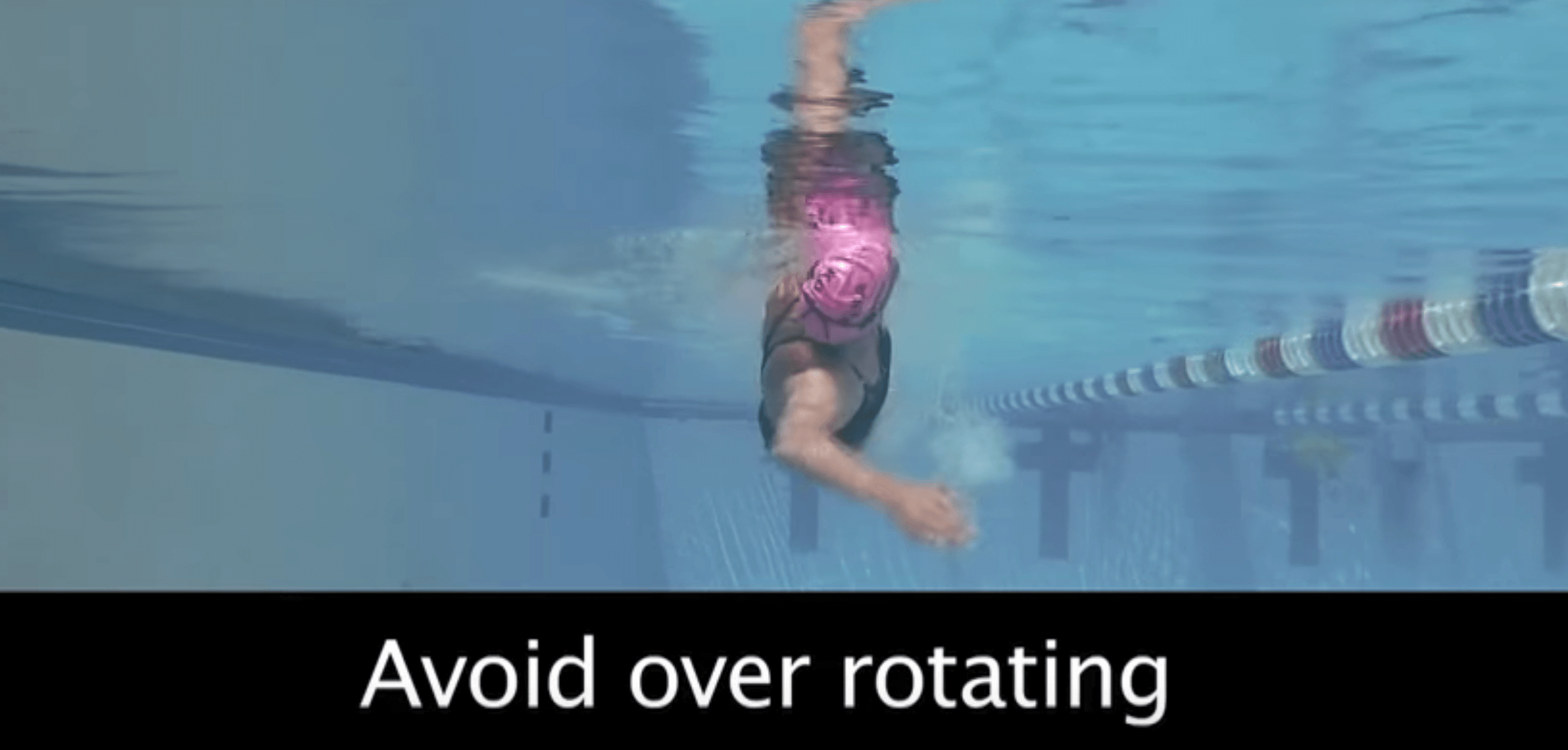Exiting the Stroke Efficiently to Reduce Drag: Technique Video Series for Faster Freestyle Swimming (part 5 of 5)
Learn how to improve your freestyle swimming technique, efficiency, power and endurance from Karlyn Pipes, swim technique expert coach and Masters Swimming multiple World Record holder. In this no-nonsense swim clinic, Coach Karlyn demonstrates five focus points essential for improving freestyle swimming. You’ll learn how to do each technique point from the high-quality underwater video and instruction on land with a Vasa SwimErg.
Karlyn’s winning ways will help you develop an efficient freestyle with increased power. Follow her lead and you’ll soon be swimming stronger, better, faster!
This clinic is presented in 5 blog posts, each with one of Karlyn’s five essential technique focus points:
Part 1. Hand Placement: How to properly set up the stroke
Part 2. Fingertip Orientation: High Elbow Catch
Part 3. Wrist Awareness and The Power of the Y
Part 4. Umph at the Front: Where to apply the power
Focus Point#5. Exiting the Stroke: Reduce drag and use less effort on the recovery
——————————————————————————————————————
Part 5. Exiting the Stroke Efficiently to Reduce Drag
This fifth focus point is all about blending the power phase into the recovery, and incorporating it into a “stretch, catch, and pull” stroke sequence. On the recovery part of the outdated “S” pull, (whereby the arms go in under the body, then out, and back down) the swimmer often develops a high elbow recovery. This means they lift from the elbow and force the hand back forward. Doing this repetitively can tear up a swimmer’s shoulders. If the swimmer doesn’t go in, out, and back, the arm won’t get stuck before the recovery. A better, more efficient way to pull is to pull straight back, feathering the hand out into the recovery and back into a stretch, glide, or extension before starting the next pull (Figure 1).

To demonstrate, the hand/forearm begins pulling back and the fingers will be pointed towards the bottom of the pool. When the fingers can’t point to the bottom of the pool anymore, the power phase of the pull is finished and the arm can then feather outwards into the recovery. (Figure 2)

Arm Recovery
In the Olympics, you can observe the arm recoveries of many of the freestylers. There are many different types of recovery, but the most important aspect of the recovery is relaxation. Many people force their recovery, spending a lot of extra energy. Recovery means rest or relax. Focus on “feathering” out to prevent yourself from getting stuck at the back of the stroke. Feather out of the recovery and move into a “stretch, catch, and pull”.
Practicing on the Vasa SwimErg
When training on the Vasa SwimErg, you can do the “stretch, catch, and pull”, while using a slightly over-hand recovery that remains relaxed. To avoid any stress on the shoulder during the recovery phase of the stroke while using the SwimErg, simply do an “underwater recovery motion”, which means keep your forearms & hands low, retracing the pull phase as you move the hand forward for the next stroke sequence. Both are effective ways to get a lot of power out of your pull. (Figure 3)

When athletes revert to using the old “S” pull with a high elbow recovery, it can be painful on the shoulders and typically, everything begins to slow down. The “S” pull can cause you to pull a little too far back and pinch your shoulder. The relaxed underwater recovery accesses a stronger pull. Allow yourself to stretch or lean out once mastering this part of the stroke sequence.
Avoid over rotating
Another important point to keep in mind: the back is relatively flat and the body line should be long and strong while swimming on the Vasa SwimErg. It’s ideal to activate the torso muscles used in Freestyle rotation by driving opposite hip into the bench just at the “catch” on opposite side. Many swimmers and triathletes have far too much rotation in the water, which is not the goal we are reaching for while swimming. (Figure 4)

Strive for a stretch or reach rather than rotation.
Practicing this on the Vasa, with a flatter scapula and wider pull will allow you to access power from the large back muscles. Using an early catch with a vertical forearm and firm wrist, plus a relaxed recovery will allow you to “stretch, catch, and pull” your way to a faster Freestyle swimming stroke.
Bio: Coach Karlyn Pipes is an excellent and very popular swim technique coach. She practices what she coaches as an accomplished Masters Swimming World Record Holder. She has an appetite for success and it shows. Voted one of the top ten masters swimmers of all-time, she holds over 200+ FINA Masters World records, of which 47 are still current. In early 2017, she broke six more FINA Masters World Records while competing in Europe.
Karlyn travels the world teaching swimmers and triathletes of every age and ability “how to swim faster with less effort”. She runs swim technique clinics and camps through her business Aquatic Edge, located in beautiful Kona, Hawaii. Recently, Karlyn was inducted into the International Swimming Hall Of Fame in 2015 and has released her new book, The Do-Over. We are proud to be associated with Karlyn and we commend her on all that she has accomplished throughout her swimming & coaching career.